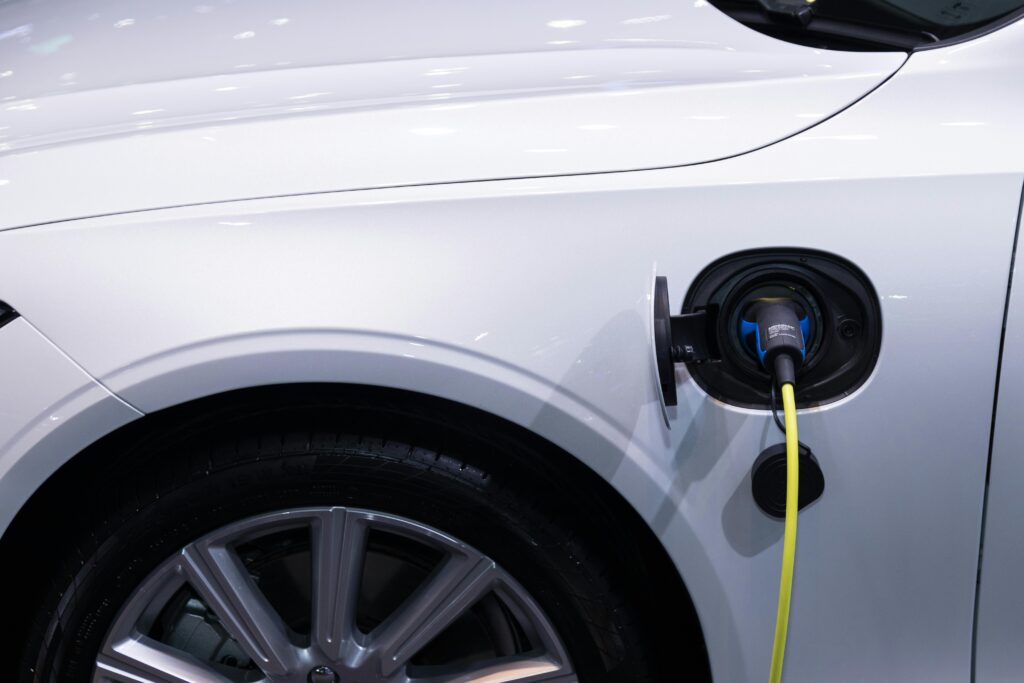Switching to an electric vehicle (EV) is exciting, but one of the first questions every new EV owner faces is: “Which charger should I get?” If you’re living in the U.S., the options might feel overwhelming — from basic plug-in chargers to advanced home installations. The truth is, the right charger depends on your driving habits, your car, and your home setup.
In this guide, I’ll break everything down into simple terms so you can confidently choose the EV charger that fits your lifestyle.

1. Understand the Different Levels of EV Chargers:
Before you shop, it’s important to know the three main types of chargers available in the U.S.
Level 1 Charger
- Works with a standard 120V outlet (like your phone charger).
- Adds about 3–5 miles of driving range per hour.
- Best for people who drive less than 30–40 miles a day.
- No installation required.
Level 2 Charger
- Requires a 240V outlet (similar to your dryer).
- Adds 20–30 miles of range per hour.
- Usually installed at home or found at public charging stations.
- Installation cost: $500–$1,500 depending on wiring.
Level 3 / DC Fast Charger
- Adds 150–200 miles in just 30 minutes.
- Found along highways and commercial areas, not common at homes.
- Extremely fast but expensive to install privately.
👉 Most U.S. homeowners go for a Level 2 charger because it balances speed and cost.
2. Check Your Daily Driving Habits:
How far you drive every day is the #1 factor in choosing a charger.
- If you commute under 40 miles daily, a Level 1 charger may be enough.
- If you drive 40–100 miles daily, a Level 2 charger is the better choice.
- If you’re a road tripper, you’ll rely more on public Level 3 fast chargers while traveling.
Think of it like fueling up: If you only drive around the neighborhood, you don’t need a gas station in your garage.
3. Look at Your EV’s Battery Size:
Not all EVs charge at the same speed. A Tesla Model 3, for example, charges faster than a Nissan Leaf simply because of battery design.
- Smaller batteries (30–40 kWh) charge quickly, even with Level 1.
- Larger batteries (60–100+ kWh) need Level 2 for overnight charging.
Check your car manual or manufacturer’s site to see maximum charging capacity before spending on an expensive setup.
4. Think About Your Home Setup:
Do you rent or own your home? Do you have a garage or just street parking? These questions matter.
- Apartment renters: You may rely on shared/public chargers.
- Homeowners with garage: A Level 2 wall-mounted charger is best.
- Street parking only: Portable chargers (plug-in Level 1/2) are more practical.
Also, check your electrical panel capacity. Many U.S. homes built before 2000 may need an upgrade before installing a Level 2 charger.
5. Factor in Installation Costs:
The charger itself may cost only $400–$700, but installation can cost more depending on your home wiring.
- Basic installation: $500–$1,000
- With panel upgrade: $1,500–$3,000
- Outdoor setup with trenching: $3,000+
Always get quotes from licensed electricians before buying the charger.
6. Consider Smart Features:
Modern EV chargers are more than just plugs. Many come with smart features like:
- Wi-Fi control: Start/stop charging from your phone.
- Scheduling: Charge during off-peak electricity hours to save money.
- Energy monitoring: Track how much power you’re using.
These features may cost extra, but they pay off in convenience and energy savings.
7. Public Charging Access:
Even if you install a home charger, it’s smart to check your area for public charging stations. Apps like PlugShare, ChargePoint, and Electrify America can help you map out stations near you.
If your city already has strong public charging infrastructure, you may not need a heavy-duty home setup.
8. Rebates and Incentives:
Good news for U.S. residents: The government wants you to go electric, so there are tax credits and rebates available.
- Federal tax credit: Up to 30% off EV charger + installation cost (capped at $1,000).
- State/local programs: Vary by state (e.g., California offers additional rebates).
- Utility company discounts: Some provide bill credits for off-peak charging.
👉 Before buying, check the Department of Energy website for incentives in your area.
9. Safety First:
Always choose a charger that’s UL-listed (safety certified in the U.S.) and installed by a qualified electrician. Avoid cheap, non-certified imports — they can damage your car or even cause electrical fires.

10. Think Long-Term:
EV adoption is growing in the U.S., and so are battery sizes. If you plan to keep your charger for the next 7–10 years, choose a unit that supports higher amperage (40–50 amps) so it won’t become outdated when you upgrade your car.
Final Thoughts:
Choosing the right EV charger isn’t just about speed — it’s about matching your lifestyle, your car, and your budget. For most U.S. households, a Level 2 charger hits the sweet spot: it’s fast enough for daily driving, future-proof, and eligible for rebates.
If you’re new to EVs, start simple, learn your driving patterns, and then upgrade as needed. That way, you’ll save money and avoid buying a charger that doesn’t fit your needs.
Conclusion:
The right EV charger depends on your driving habits, home setup, and budget. A Level 2 charger is often the most practical choice for U.S. households.
Actionable Tip:
Before buying, check your home’s electrical capacity and explore local rebates — you may cut costs by 30% or more.
Content Source:
Based on U.S. EV market data, Department of Energy guidelines, and consumer reports.
Social Media Reference
Know someone buying their first EV? Share this article to save them from confusion.
Blogs Reference Theory:
We’ll keep exploring practical energy solutions for American households — from EVs to solar to energy-efficient homes.
Posts Reference:
If you enjoyed this, check our recent guide on “Energy Efficient Windows – Are They Worth It?”
Popular Posts:
Useful Links:
- U.S. DOE EV Charger Resources (energy.gov)
- PlugShare Charging Map (plugshare.com)
- Consumer Reports EV Charger Buying Guide (consumerreports.org)
Disclaimer
This article is for educational purposes only. Always consult a licensed electrician before installing any charging equipment.
Contact Info:
Got EV questions? Reach out.
